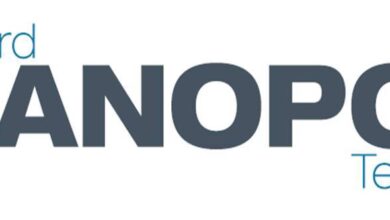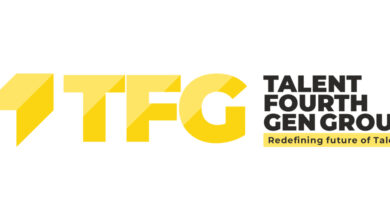Global Blood Brain Barrier Technologies Market Report 2021-2028: Large Number of Product Approvals and Launches & Nanoparticles for Brain Drug Delivery – ResearchAndMarkets.com

DUBLIN–(BUSINESS WIRE)–The “Blood Brain Barrier Technologies Market Forecast to 2028 – COVID-19 Impact and Global Analysis” report has been added to ResearchAndMarkets.com’s offering.
The blood brain barrier technologies market is expected to reach US$ 5,101.94 million by 2028 from US$ 1,041.05 million in 2021; it is estimated to register a CAGR of 25.5% from 2021 to 2028.
Growing prevalence of neurological disorders, and increasing geriatric population and rising prevalence of age-associated neurological disorders are the key factors driving the market growth. However, the complications in brain medication delivery are hindering the market growth.
The brain is surrounded by protective fluid known as cerebrospinal fluid and a protective membrane called the meninges. Blood brain barrier is another protective element present between the brain’s blood vessels, and the cells and other components that together make up brain tissue.
The blood brain barrier protects the brain against disease-causing pathogens/toxins that may be present in the blood. It blocks the passage of foreign substances entering the brain tissue. It also blocks the passage of life-saving drugs used to treat neurodegeneration and neuroinflammation events. Thus, the technologies used to deliver drugs across blood brain barrier are different than the technologies used to deliver drugs to other body parts.
Neurological disorders such as epilepsy and seizures, Parkinson’s disease, dementia, autism, Alzheimer’s disease, brain tumors, and cerebral palsy affect the brain and nerves of the human body. The prevalence of neurological disorders is increasing in the US. According to the Centers for Disease Control and Prevention (CDC), Alzheimer’s disease is one of the top 10 causes of death in the US. In 2020, Alzheimer’s disease affected 5.8 million people in the country.
Similarly, as per the estimates of the Parkinson’s Foundation Prevalence Project, the US recorded 930,000 cases of Parkinson’s Disease in 2020. Additionally, according to the Alzheimer’s Association estimates, more than 6 million Americans have Alzheimer’s disease, and the number is projected to reach ~13 million by 2050. Moreover, deaths due to Alzheimer’s and dementia have increased by 16% in the US since the COVID-19 pandemic. On the other hand, deaths due to Alzheimer’s have increased by 145% during 2000-2019.
Epilepsy is a noncommunicable chronic brain disease that affects people of all ages. According to the World Health Organization (WHO), ~50 million people worldwide are suffering from epilepsy, making it one of the most common neurological diseases in the world. ~80% of people with epilepsy live in low- and middle-income countries.
The same source estimates that up to 70% of people with epilepsy could live seizure free if they undergo proper diagnosis and treatment. Dementia is currently the seventh-leading cause of death among all diseases, and one of the leading causes of disability and addiction among elderly people worldwide.
According to the WHO, more than 55 million people live with dementia worldwide, and there are ~10 million new cases every year. The condition is caused by a variety of diseases and injuries that primarily or secondarily affect the brain. Alzheimer’s disease is the most common form of dementia and may contribute to 60-70% of cases. Thus, the growing prevalence of neurological disorders demands advanced blood-brain barrier technologies for the treatment, which is driving the market growth.
Technology Insights
Based on technology, the global blood brain barrier technologies market is segmented into bispecific antibody RMT approach, trojan horse approach, increasing permeability, passive diffusion, and other noninvasive BBB technologies. In 2020, the increasing permeability segment held the largest share of the market.
However, the reagents segment is expected to register the highest CAGR in the market during 2021-2028. Increased blood brain barrier (BBB) permeability is related with the remodeling of interendothelial junctional complex and gap formation between brain endothelial cells (paracellular pathway), and intensive pinocytotic vesicular transport between the apical and basal side of brain endothelial cells (transcellular path).
The growth of the market for the increasing permeability segment can be attributed to the rising focus on research activities to treat many neurological and central nervous system disorders.
Application Insights
Based on application, the blood brain barrier technologies market is segmented into Alzheimer’s disease, epilepsy, Parkinson’s disease, multiple sclerosis, Hunter’s syndrome, brain cancer, and others. The Parkinson’s disease segment is expected to hold the largest market share in 2021.
Key Market Dynamics
Market Drivers
- Growing Prevalence of Neurological Disorders
- Increasing Geriatric Population and Rising Prevalence of Age-Associated Neurological Disorders
Market Restraints
- Complications in Brain Medication Delivery
Market Opportunities
- Large Number of Product Approvals and Launches
Future Trends
- Nanoparticles for Brain Drug Delivery
Companies Mentioned
- Teva Pharmaceutical Industries Ltd.
- F. Hoffmann-La Roche Ltd.
- Eli Lilly and Company
- Bristol-Myers Squibb Company
- Pfizer, Inc.
- Johnson and Johnson Services, Inc.
- Fabre-Kramer Pharmaceuticals, Inc.
- Bioasis Technologies Inc.
- Abliva AB
- JCR Pharmaceuticals Co., Ltd.
For more information about this report visit https://www.researchandmarkets.com/r/3imiun
Contacts
ResearchAndMarkets.com
Laura Wood, Senior Press Manager
[email protected]
For E.S.T Office Hours Call 1-917-300-0470
For U.S./CAN Toll Free Call 1-800-526-8630
For GMT Office Hours Call +353-1-416-8900




